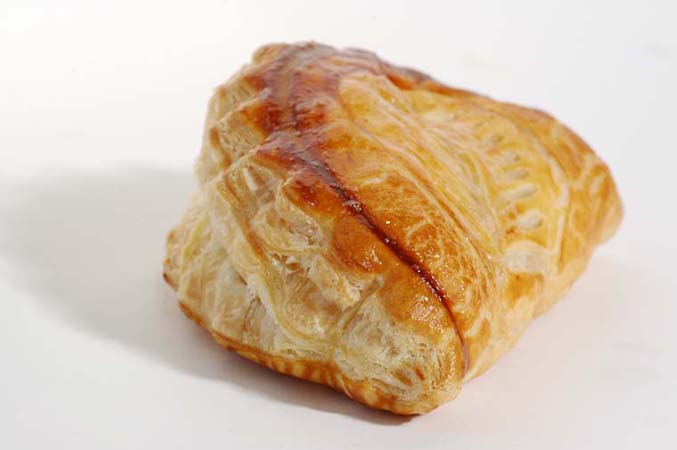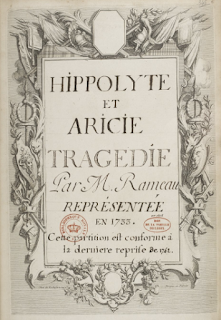Chausson, Chausson, Paganini, Schumann
Théâtre des Champs Elysées, Paris, Wednesday March 19 2014
In the last few years I've drifted away from concert halls and spent my time (and pots of hard-earned money) almost exclusively in opera houses. This is no doubt a mistake: hours and hours of second-rate music indifferently performed have probably corrupted my taste irretrievably. So my opinion on concerts should be taken with a big pinch of salt. This one, it seemed to me, was odd and frustrating. The combination of works was odd enough. But the order they were played in was odder still.
It seemed unfair on Ann Hallenberg to have her start with the strangest and most demanding piece of the evening. To me it would have made more sense to warm up with an overture, then do the violin Poème, the Paganini lollipop and Korcia's encore, leaving the thornier Poème de l'amour et de la mer till part two, before the Schumann. But it was not so.
Ann Hallenberg's performance, which was what I was there for really, had everything you'd expect from her: beauty of sound, sophisticated phrasing, breadth of nuance, sincerity of feeling, intelligence and impeccable taste. Her mezzo voice has, of course, a warmer, rounder, less "piercing" sound than a soprano. All the more reason, then, for the orchestra, under its conductor, to play with special sensitivity. The Paris chamber orchestra was, unfortunately, unable to match the singer's carefully-crafted dynamic range and plugged doggedly away at mf and above.
As a result, her subtle effects (and of course the text) were sometimes lost in what came across as insensitive noise from a standard, "jobbing" orchestra. Attacks were - a French orchestral speciality - sometimes patchy, and Chausson's most tortuous, "amiable tapeworm" harmonies came across as decidedly murky.
But Laurent Korcia plays regularly with Kantorow and this band, so perhaps it's just my cloth ears letting me down again. He plays exactly the way I like: plenty of vigour, plenty of character, limited sentimentality. He seems very much his own man, so to speak, not playing to the gallery but doing things exactly the way he sees them and probably not seeing eye to eye with everyone - literally indeed, as his intriguing stage stance involves downcast eyes most of the time, a twist and curve of the body that looks somehow coy or shy, and only the faintest of smiles at applause. He doesn't obviously engage with his audience, yet is devilishly charismatic.
His sounds, which I put deliberately in the plural, since they were distinctly varied, seemed almost aggressively individual: rasping bowing, or what I thought of as daringly expressive tuning, for example (if such a notion makes any sense to anyone but me). I admit I personally found his harmonics, in the Paganini I wasn't especially interested in, hard to decipher. I came away feeling it was somehow strange he should play Chausson at all: he seems so obviously cut out for Bartok, Prokofiev, Shostakovich...Yet he's become something of a Paganini specialist - go figure, as our American friends say.
So, as I think I've made clear, there was, to me, a puzzling mis-match between one of Europe's greatest mezzos, as the programme notes had it, France's foremost violinist, as you can read anywhere, and what is not one of Europe's greatest orchestras, nor, despite its fancy name, France's foremost. And as, after the interval, the orchestra was to go it alone... we left.
- Chausson: Poème de l'amour et de la mer op. 19
- Chausson: Poème for violin and orchestra op. 25
- Paganini: I Palpiti for violin and orchestra, after Rossini's Tancredi
- Schumann: Symphony n° 2 op. 61
 |
| Chausson |
It seemed unfair on Ann Hallenberg to have her start with the strangest and most demanding piece of the evening. To me it would have made more sense to warm up with an overture, then do the violin Poème, the Paganini lollipop and Korcia's encore, leaving the thornier Poème de l'amour et de la mer till part two, before the Schumann. But it was not so.
Ann Hallenberg's performance, which was what I was there for really, had everything you'd expect from her: beauty of sound, sophisticated phrasing, breadth of nuance, sincerity of feeling, intelligence and impeccable taste. Her mezzo voice has, of course, a warmer, rounder, less "piercing" sound than a soprano. All the more reason, then, for the orchestra, under its conductor, to play with special sensitivity. The Paris chamber orchestra was, unfortunately, unable to match the singer's carefully-crafted dynamic range and plugged doggedly away at mf and above.
As a result, her subtle effects (and of course the text) were sometimes lost in what came across as insensitive noise from a standard, "jobbing" orchestra. Attacks were - a French orchestral speciality - sometimes patchy, and Chausson's most tortuous, "amiable tapeworm" harmonies came across as decidedly murky.
His sounds, which I put deliberately in the plural, since they were distinctly varied, seemed almost aggressively individual: rasping bowing, or what I thought of as daringly expressive tuning, for example (if such a notion makes any sense to anyone but me). I admit I personally found his harmonics, in the Paganini I wasn't especially interested in, hard to decipher. I came away feeling it was somehow strange he should play Chausson at all: he seems so obviously cut out for Bartok, Prokofiev, Shostakovich...Yet he's become something of a Paganini specialist - go figure, as our American friends say.
So, as I think I've made clear, there was, to me, a puzzling mis-match between one of Europe's greatest mezzos, as the programme notes had it, France's foremost violinist, as you can read anywhere, and what is not one of Europe's greatest orchestras, nor, despite its fancy name, France's foremost. And as, after the interval, the orchestra was to go it alone... we left.





Comments
Post a Comment